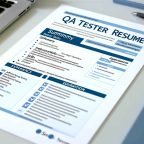In the rapidly evolving world of technology, independent software testing has emerged as a critical component of the development process, ensuring software meets quality standards and delivers a seamless user experience. This field is continually influenced by technological advancements, changing methodologies, and the growing complexity of software applications. Here, we explore the key trends shaping the future of independent software testing, projecting how they will transform the landscape over the coming years.
1. Increased Adoption of AI and Machine Learning
One of the most significant trends in independent software testing is the integration of artificial intelligence (AI) and machine learning (ML) technologies. These technologies revolutionise testing, enabling more efficient defect detection, predictive analysis, and automated test generation. AI algorithms can analyze vast amounts of data to predict and identify potential risk areas, enhancing testing processes’ effectiveness. This speeds up the testing cycles but also helps reduce the human effort involved, leading to a more agile development environment.
2. Shift towards DevOps and Agile Methodologies
Adopting DevOps and Agile methodologies profoundly influences independent software testing by emphasizing continuous integration and continuous delivery (CI/CD). This shift promotes a more collaborative and iterative approach to testing, ensuring that it is integrated earlier in the development process. As a result, testing becomes not just a phase but an integral part of the development lifecycle, facilitating faster releases and a more dynamic response to market demands. Independent software testing professionals must adapt these methodologies to stay relevant and effective.
3. Growth of IoT and Connected Devices Testing
Independent software testing faces new challenges and opportunities with the exponential growth of the Internet of Things (IoT) and connected devices. Testing in this domain requires dealing with various devices, platforms, and software versions, making it more complex and demanding. The future will see a heightened focus on security, performance, and usability testing for these devices, as the impact of failures can be significant, potentially affecting physical safety and security. Independent testers must develop specialized skills to address these unique challenges effectively.
4. Emphasis on Security and Vulnerability Testing
As cyber threats continue to evolve, there is an increasing emphasis on security in independent software testing. Organizations recognize the importance of integrating security testing throughout development to identify and mitigate vulnerabilities before deploying software. This trend is giving rise to ‘DevSecOps,’ where security is a shared responsibility integrated into development and operations. For independent software testing, this means a greater focus on automated security testing tools and techniques and a continuous approach to security assessments.
5. Expansion of Test Automation
Test automation is a trend that continues to grow within independent software testing, driven by the need to accelerate testing processes and enhance accuracy. Automated testing tools are becoming more sophisticated, capable of handling more complex test scenarios and ensuring more comprehensive coverage. This automation extends beyond functional testing, including performance, load, and stress testing. As automation technology advances, the role of the independent tester is evolving from manual testing to designing and managing automated test scripts and frameworks.
6. User Experience (UX) Becomes a Priority
The quality of user experience is increasingly becoming a key determinant of software success. Independent software testing extends beyond finding bugs to ensuring the application is intuitive, user-friendly, and accessible across various devices and platforms. This trend emphasizes the importance of usability testing and has led to a more holistic approach to quality, focusing on delivering a superior user experience.
7. Rise of Crowdsourced Testing
Crowdsourced testing is gaining popularity as a flexible, cost-effective way to enhance testing efficiency and coverage. This model leverages a global pool of independent testers to conduct software testing under diverse real-world conditions, providing a more comprehensive assessment of software performance and usability. Crowdsourced testing is particularly beneficial for applications that require testing in varied geographical and network conditions or where user demographics are diverse and broad.
Conclusion
As these trends evolve, independent software testing becomes more integral to the software development lifecycle. The future of this field is geared towards more intelligent, automated, and user-centric testing practices, reflecting broader changes in technology and business practices. For organizations and professionals involved in independent software testing, staying ahead of these trends will be crucial to delivering software that functions flawlessly and meets the ever-changing expectations of end-users. Embracing these changes will ensure that independent software testing remains a dynamic and vital part of the tech industry’s future.

Software Testing Lead providing quality content related to software testing, security testing, agile testing, quality assurance, and beta testing. You can publish your good content on STL.



